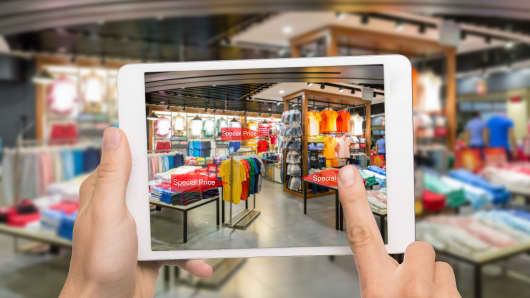Augmented Reality, or AR, has been billed as an imminent game-changer for retailers for quite some time, with its potential to enable never-before-seen ways to engage customers. This week's release of the IKEA Place app is a watershed moment for AR in that it is impressive as the first mainstream and practical example to live up to the technology's potential in retail.
Many of the heretofore AR apps have been answers in search of a problem. (The one bona fide AR hit is Pokemon Go, which generated $100s of millions in revenue). But with this year's release of AR-specific software platforms from Google and Apple (ARCore and ARKit, respectively), IKEA Place may be the first of what could finally be a rapid deployment of truly useful AR products.
IKEA Place is a glimpse at the transformative power that AR offers savvy retailers. After downloading it to an iPhone, a user scans a room using the phone's camera. Then they browse through some 2,000 pieces of furniture and accessories within the app, select the ones they like and place them within their room photo, rotating or tweaking until placement is just right. And that's it. The result is a patently lifelike and perfectly proportioned image, at scale, of how a piece or several pieces of furniture will look in the intended room. Users can save the image, share it to others directly, and even click over to the company's site to make a purchase.
In addition to the fluidity and speed at which this all happens, the magic of IKEA's AR experience is that it can remove a lot of the tedium and labor and, perhaps most importantly, human error that previously haunted the furniture-buying experience — the iPhone's software and sensors work with the app to measure a room with no user input other than the initial scan. There's no guesswork about what a sofa will look like in a tight alcove, or whether a sofa bed will fit in a room when fully extended. In short, this form of AR succeeds because, despite adding a layer to the process of making a purchase, it actually makes the experience more efficient and, frankly, enjoyable. That should prove to be a litmus test for other AR apps and experiences going forward.
It's notable that home goods seem to be an especially fitting category for AR technology. Sherwin-Williams introduced ColorSnap Visualizer, a color-matching app, back in 2013 and continued to improve it over time. Now the app offers an AR-style capability to color the walls of a room within a photo, in addition to other features. And home improvement big box store Lowe's launched a pilot AR app called Lowe's Vision: In-Store Navigation that allows customers to search for products and use their phone's display to follow a path to the item's location in the store. The app is still in the pilot phase and reserved for visitors to select California stores. It's worth noting the Lowe's app is Android-only, whereas IKEA's Place app is iOS only, foreshadowing yet another technological platform war to challenge both customers and retailers.
The CNBC Brand Studio conceives and creates stories relevant to our partners and the CNBC audience.


